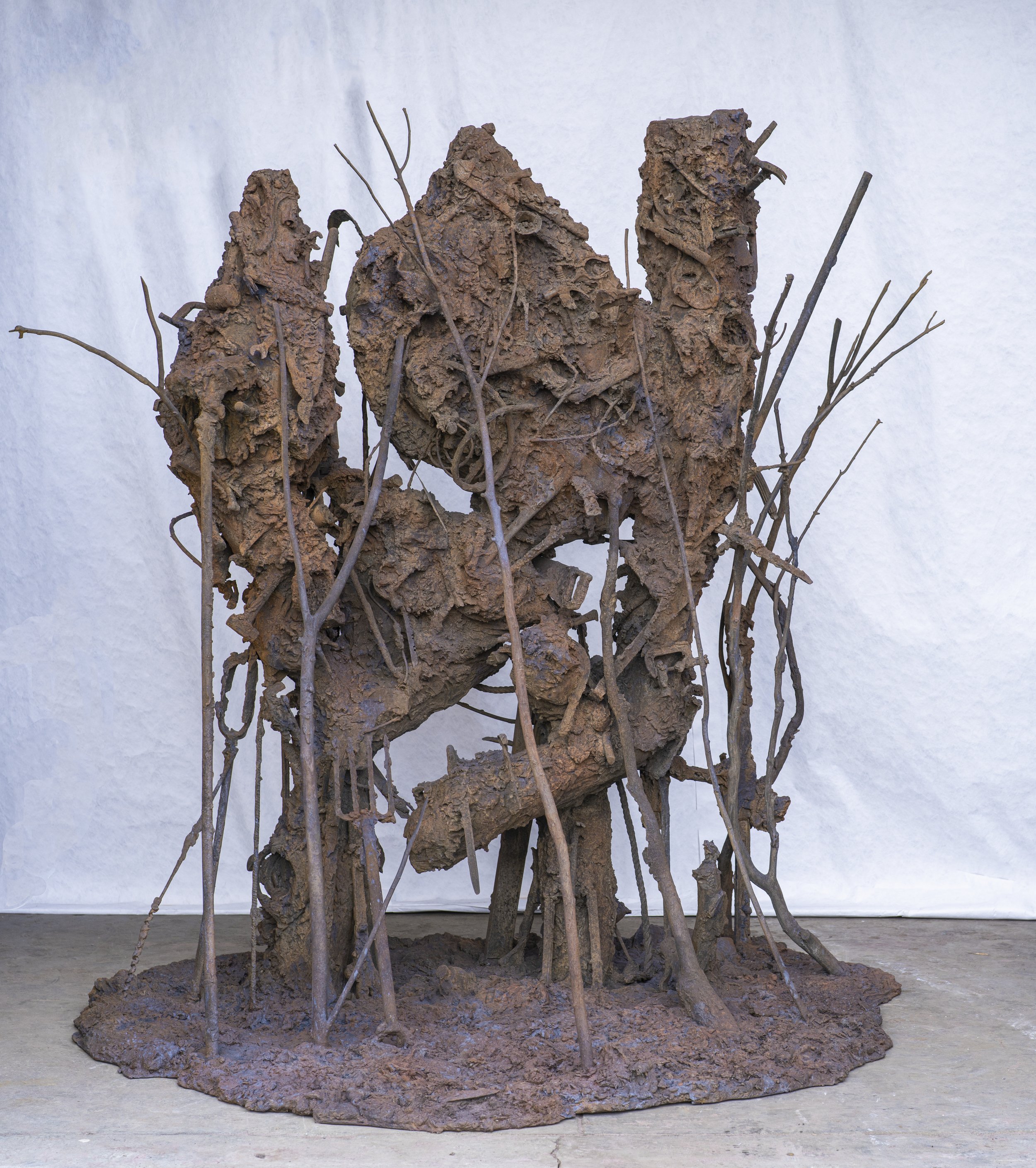An Esteemed Conversation with Jim Dine
PORTRAIT 2023 NYC © CHARLES ROUSSSEL
Jim Dine is an American artist whose œuvre extends over sixty years. Dine’s work includes painting, drawing, printmaking (in many forms including lithographs, etchings, gravure, intaglio, woodcuts, letterpress, and linocuts), sculpture, and photography; his early works encompassed assemblage and happenings, while in recent years his poetry output, both in publications and readings, has increased.
Dine has been associated with many art movements, including Neo-Dada (use of collage and found objects), Abstract Expressionism (the gestural nature of his painting), and Pop Art (affixing everyday objects including tools, rope, articles of clothing, and even a bathroom sink) to his canvases, yet he has avoided such classifications. At the core of his art, regardless of the medium of the specific work, lies an intense autobiographical reflection, a relentless exploration, and criticism of self through a number of personal motifs, including the heart, the bathrobe, tools, antique sculpture, and the character of Pinocchio (among flora, skulls, birds and figurative self-portraits). Dine’s approach is all-encompassing:
Dine has had more than 300 solo exhibitions, including retrospectives at the Whitney Museum of American Art, New York (1970), the Museum of Modern Art, New York (1978), Walker Art Center, Minneapolis (1984–85), Frederik Meijer Gardens & Sculpture Park, Grand Rapids, Michigan (2011) and Museum Folkwang, Essen (2015–16). His work is in permanent collections, including the Art Institute of Chicago; the Metropolitan Museum of Art, New York; the Musée National d'Art Moderne, Centre Pompidou, Paris; the National Gallery of Art, Washington, D.C.; Solomon R. Guggenheim Museum, New York; Tate Gallery, London; Tokyo Metropolitan Art Museum, Tokyo; and Yale University Art Gallery, New Haven, Connecticut.
Dine’s distinctions include nomination to the Academy of Arts and Letters in New York, Commandeur de l’Ordre des Arts et des Lettres, the British Museum Medal following his donation of 234 prints to the museum, membership of the Accademia di San Luca in Rome, and Chevalier de l'Ordre de la Légion d'Honneur
I had the honor and pleasure of asking Jim about his most recent exhibit, Three Ships, What inspired him the most about the Pop art movement, his numerous poetry books, and so much more.
UZOMAH: What about creating visual art makes it poetic for you?
JIM: Everything I make with my hands has poetry in it. I’m not interested in an art without it, and there is plenty of that about! You have written over twelve poetry books; for you, where do poetry and your art intersect? Same guy, different medium. My method for making a painting is the same for my drawing, poetry, sculpture, etc.; It is about correcting until I hear my voice clearly.
Me #13, 2020 Huile sur toile | Oil on linen 55 × 46 cm — 21 3/4 × 18 1/4 in. Photo: © Bertrand Huet Tutti
U: If you could pick one artwork you are most known for to summarize your career, which would it be and why?
J: The Wheatfields (2d version). It is the accumulation of all my ideas about objects and is informed by drawing and painting. The emotion of the work is at the highest level of heat that I’m able to generate, and if I die this minute, I’d be happy to be remembered by it alone.
U: Can you discuss some of your favorite writers and poets? How has their body of work influenced your artwork and writing?
J: The American poet Robert Creeley was a wonderful friend to me. He said to me at a poetry reading in the late 60’s that I took part in, “You know you are a poet, don’t you?”. He gave me my voice to use as I wanted.
Exhibition views Toutes les images / All images: Courtesy the artist and TEMPLON, Paris – Brussels – New York ©️ Charles Roussel.
U: What made you start sculpting? Can you describe your sculptural process?
J: I have always found romance in objects. As a child, I spent hours arranging, rearranging, touching, and tasting the three dimensions. It comes very natural to me.
U: Judson Gallery was launched in 1959 in a Greenwich Village basement by you and a group of friends. How vital are artist-run galleries versus non-art-run galleries?
J: Artst-run galleries are just about what is on view. The usual non-artist-run place of commerce is just that, “a grand magasin.”
Exhibition views Toutes les images / All images: Courtesy the artist and TEMPLON, Paris – Brussels – New York ©️ Charles Roussel.
U: What was the goal of creating the Judson Gallery?
J: For us kids to become famous within the 20 square city blocks we inhabited.
U: After much success emerging from the Pop art era, what about that movement inspired you the most?
J: I lived through the ’60s as a kind of bystander to what was happening. I was by far the youngest and the most disaffected from the art world. I am inspired now to be standing and working. Then I was a boy.
Three Ships (the Magi), 2022 Bronze | Bronze 284 × 267 × 234 cm — 112 × 105 × 92 in. Photo: © Jim Dine Studio
U: Your recent exhibit, “Three Ships,” explores three years of art making. How did you go about selecting a piece? How did you pick artwork that best described the exhibit’s theme and displayed your artistic statement when you made the pieces?
J: I am an old guy on a roll. I cannot stop creating now as there is only now. The exhibit’s theme is energy and grace, and beauty. My goal is to go forward and to make visible 88 years of looking and hearing poetry in my head.
For more information about Jim’s work, please get in touch with the Templon Gallery’s site. You can also visit his exhibition showcase here.




